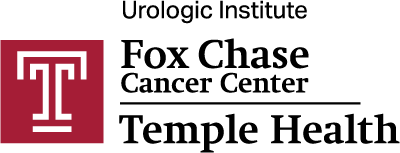Non-tuberculous mycobacteria (NTM), particularly Mycobacterium avium complex (MAC), has become increasingly more prevalent in patients causing pulmonary dysfunction. Daniel Salerno, MD, is the principle investigator for a study designed to determine if clofazimine has anit-mycobacteral activity against MAC. In this video Dr. Salerno explains the study objectives, design as well as patient eligibility criteria, and how to enroll your patients who may be candidates.
Hi everyone. I'm dr Daniel Salerno from Temple on center. I want to talk about this new study that we have at the loan center claw fascination for non tuberculosis, micro materia treatment specifically for mac lung disease. So the study objectives, primary objectives is to define if prophecy mean has antimicrobial material activity against mycobacterium avian complex map. Secondary objectives include assessment of the clinical response to profess him in treatment to evaluate the safety signal of prophecy mean to evaluate changes in the minimum inhibitory concentration, the Mc of those isolates to prophecy mean overtime. And we are expecting to enroll a total of 102 subjects across all the sites in the United States. And the treatment phase is gonna be 24 weeks and then it's followed by an off treatment safety follow up visit that will happen at week 36. The study endpoints, the primary endpoints is culture conversion. We need to show two consecutive negative sputum cultures at 24 weeks Post treatment initiation and they should remain negative until the 24 week time point. That's the primary endpoint regarding secondary endpoints. Clinical response. With objective measurements of 24 weeks and this will imply a change from the baseline from each measure below One of them is going to be the six minute walk test. The other one is semi quantitative sputum acid fast smears and cultures. And then there's some patient reported outcome surveys included the Q. O. L. B. With an NTM module and a fatigue scale. Then we're also gonna have parameter we with F. A. B. 1% predicted an F. A. B one over FCC ratio. And we're also gonna track inflammatory markers such as E. S. R. And E. Hs. Crp. Other secondary endpoints are gonna be. The safety assessment is gonna be adverse effects reported by investigator and including the severe ones. Then the patient report adverse event questionnaire while taking the study drugs and at the time of study discontinuation, serum chemistries and complete blood count. The prolongation of the QT interval in the E. K. G. With the calculation of the Q. T. Interval and then MAC in vitro susceptibility to claw fascination with development of resistance to prophecy. Mean on M. I. C. Measurements. Post treatment for Kaufusi Mean versus MAC isolates doing this in vitro importantly the inclusion criteria for this study at least two positive max sputum cultures in the last 12 months with at least one of them being obtained within 12 weeks prior to random Ization. Then patients should meet the 80 s idea. Say 2007 pulmonary disease criteria for Mac. They should be adult males and females age 18 or over and they should have ability to providing for consent for the use of the study truck exclusion criteria are the following any patient who is unwilling or unable to provide consents or to comply with this protocol lavatory NTM disease is another exclusion criteria. Patients who are currently taken or within the prior two weeks received any of the following bed a Quillin or any component of the 80 S. I. D. S. A. Multi drug recommended therapy. This will include microlight attend, it'll refunding for mycobacterium complex disease. Also the current use of in hell antibiotics including ami casing, compromising or gente my zing in the judgment of the investigators, patient is not a candidate for observation. For example, patients may have very severe symptoms, extensive disease burden but rather should be treated with standard multi drug therapy. Prior use of prophecy. Mean, that has resulted in an allergy to prophecy mean, or a severe adverse reaction. Current use of medications that are associated with QT prolongation. And we're going to go to a list of those medications corrected Q. T. Q. T. C. Interval on an E. K. G. More than 470 milliseconds for females and 450 millisecond for males. And this is calculated using the correction formula Advanced lung disease. That will mean maybe one less than 30 HIV active pulmonary tuberculosis requiring treatment and screening, active pulmonary malignancy or chemotherapy or radiation. Within one year of screening Use of chronic systemic corticosteroids at doses higher than 15 mg per day for more than 12 weeks prior long or other soling transplant and pregnancy breastfeeding. That will continue during treatment. Going over the list of some of the prohibit medication associated with Q. T. Prolongation. I'm not gonna read all of them but you have them in the slides. Those are the common medications that can cost QT prolongation is and we don't want to add Kaufusi me into that. And this life represent the study design in a timescale. I'm going to go from left to right. So first we do screening baseline visit Then for patients who qualify and are willing to participate. We're gonna randomize in a 1-1 fashion to prophecy mean or placebo. Then they're gonna have uh subsequent monetary or sputum sputum will be collected every two weeks alternating at home and induced. And the one final sputum sample will be collected at week 36. Then we're also going to monitor the E. K. G. For QT prolongation as mentioned before. They're going to have a 12 week visit. Then they're going to have more sputum and E. K. G. Monitoring the the the primary outcome evaluation visit is going to happen in 24 weeks And then we have the follow up 36 weeks Putem adverse event check visit. This is a nice table that pinpoints the schedule of events. I'm not going I'm not going to go over every detail on this table but you can see it here when you have a physician visits. There are not too many as you can see here. There is the baseline. There's the 12 week And then it's the 24 weeks and then what type of test is gonna be done in each visit and how those patients are going to be followed. I want to thank all of you for listening, and I hope you have interest in this study and can refer patients to us. Thank you.


